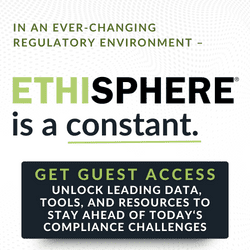6 Critical Changes for Client Life Cycle Management
In less than six months’ time (January 3, 2018), banks must be fully compliant with MiFID II regulatory obligations, bringing in wide-ranging compliance changes. Laura Glynn, Fenergo Director of Regulatory Compliance, examines the six key changes that MiFID II will have on Client Lifecycle Management in particular and how financial institutions can ensure they are adequately prepared.
In less than six months’ time (January 3, 2018), banks must be fully compliant with MiFID II regulatory obligations, bringing in wide-ranging compliance changes. Laura Glynn, Fenergo Director of Regulatory Compliance, examines the six key changes that MiFID II will have on Client Lifecycle Management in particular and how financial institutions can ensure they are adequately prepared.
The Markets in Financial Instruments Directive II (MiFID II) aims to improve current European legislation by injecting further transparency into financial markets and offering increased protection to investors. The incoming directive will add increased complexity to the client life cycle management process for banks within the EU, as well as banks around the world that serve European clients, by introducing new classifications for both clients and products alike. This will potentially bring more clients into scope for MiFID II obligations.
A core part of complying with MiFID II will involve client outreach to collect the data and documentation required to support the new regulatory obligation and drive the ultimate compliance decision. All of this will have a heavy impact on operational efficiency. This may, in turn, hinder compliance ahead of the deadline of January 3, 2018.
All in all, MiFID II has all the potential to seriously erode client experience.
MiFID II will bring in six key changes to client life cycle management processes:
#1: Client Categorization
The Markets in Financial Instruments Directive II will not alter the current MiFID classification regime (i.e., the three main categories of Eligible Counterparty (EC), Professional Client (PC) and Retail Client (RC) will remain).
However, under MiFID II, local authorities and municipalities can no longer be treated as Professional Clients or Eligible Counterparties.
These entities can instead opt up for Elective Professional Client status, provided they satisfy the requisite knowledge and experience to meet the opt-up criteria.
How Does This Affect Client Life Cycle Management?
From a client life cycle management perspective, local authority and municipality clients must be reclassified. This will involve a series of tasks and activities designed to recategorize clients compliantly, including:
- A client data look-back process to pinpoint all local authority and municipality clients that may need to be remediated and reclassified accordingly.
- An outreach program to each client affected to inform them of the reclassification and solicit consent if they elect to change from Retail Client or opt to be treated as Elective Professional Clients.
- Establishing a process whereby all consent documents can be signed, returned and processed
#2: Identification Requirements – The Rise of the Legal Entity Identifier
Although the collection of LEIs is already recommended under several key regulations such as EMIR (European Market Infrastructure Regulation) and MAR (Market Abuse Regulation), the Legal Entity Identifier will finally become mandatory for the first time under MiFID II for firms’ subject to Transaction Reporting (TR) obligations.
This means that firms that fall under this remit must not provide services to a client that triggers a transaction reporting obligation until it obtains a valid LEI for that client. In fact, submitting transaction reports without LEI data will result in the rejection of the reports by competent authorities.
The LEI Challenge for MiFID II
Many financial institutions are currently reviewing client data to identify clients without a valid LEI, performing an outreach program to these clients to encourage them to apply for the LEI from their Local Authority Units (LOUs).
Given the relatively low uptake of LEIs thus far (64,000 LEIs were issued in 2016, however, 76,000 had lapsed during the same period), it is envisaged that there will be significant demand on LOUs in an effort to attain an LEI before January 3, 2018.
In anticipation of this, GLEIF (the Global Legal Entity Identifier Foundation) recently introduced the concept of “Registration Agents” to enable legal entities to access a greater number of organizations authorized to issue LEIs.
From a technology perspective, banks will need to consider upgrading their existing client onboarding software solutions to include real-time data fields (e.g. LEI, status of LEI, legal address, legal name and associated entity, etc.).
#3: Product Classifications
MiFID II extends transparency requirements to a much wider range of financial instruments, which must be classified appropriately. This is particularly relevant for MiFID II Transaction Reporting obligations.
There is a new inclusion in the “financial instrument” definition under MiFID II called Commodities. This covers cash-settled commodity derivatives, physically settled commodity derivatives, exotic derivatives and emission allowances.
The CFI (Classification of Financial Instruments) code is a mandatory field for transaction reporting and must follow the ISO 10962 standard. This is a six-letter code with a clearly defined logic (e.g., equity shares = ESXXXX, equity shares with voting rights = ESVXXX).
To ensure compliance with the new product classifications, financial institutions will need to map their existing product list to the ISO 10962 code. Clients who trade in these newly covered products will be brought into scope under MiFID II and may be required to provide additional data and documentation to support the regulatory obligation. All this information (client data and new product classifications) should, in turn, populate the Transaction Report.
#4: Suitability & Appropriateness
As previously mentioned, every client must be categorized appropriately as an Eligible Counterparty, Professional Client or Retail Client, depending on their knowledge and experience, including their ability to bear losses and a client’s risk tolerance.
As a result of these categorizations, the financial institution must ensure it fulfills suitability obligations. A fundamental requirement is to determine and document if investment advice is being provided to the client, as this will define the subsequent suitability and/or appropriateness obligations.
To this end, client onboarding or client life cycle management software solutions must be able to verify suitability requirements for knowledge and experience, the financial situation and investment objectives. To eliminate regulatory interpretation, the ideal solution will include a panel of embedded logic, which will establish the suitability and appropriateness requirement for the entity based on regulatory rules.
#5: Direct Electronic Access
For the first time, MiFID II brings Direct Electronic Access (DEA) clients into scope for regulatory compliance. This means that written agreements must now be put in place between the firm and each DEA client.
MiFID II dictates that all DEA clients must undergo an annual due diligence review – similar to the KYC refresh process. The main difference being that it should occur at least every 12 months regardless of the client’s risk rating, unlike the KYC process, which is linked to risk level.
In a client life cycle/onboarding situation, financial institutions should identify and classify all DEA clients accordingly. As an initial step in the client onboarding process, a user should be allowed to confirm if the entity provides DEA services.
Several new regulatory requirements for DEA entities should be included in the client life cycle solution, including:
-
- Due diligence assessment;
- Assessment of suitability of DEA;
- Any preset trading and/or credit thresholds;
- Mandatory binding written DEA agreement.
#6: Transaction Reporting
Under MiFID II, transaction reporting will be applicable to a wider range of financial instruments and require the disclosure of additional mandatory data. The requirements for transaction reporting are being increased to include additional new venues, more financial instruments and greater scope of the actual report (such as identifying the client and the individual trader of the transaction). These transactions must be reported to Approved Reporting Mechanisms (ARMs). Transactions reported in accordance with EMIR to a trade repository, which is approved as an ARM, will typically satisfy the MiFIR reporting requirement.
To fulfill MiFID II transaction reporting obligations, banks must utilize solutions that can accommodate the capture of client static data (i.e., data that does not change based on the entity’s trading activity) and processing of these additional data and products.
Conclusion
MiFID II represents a key opportunity to radically transform compliance operations into a truly client-centric, efficient and value-added function. The next six months will test the resilience of compliance, data and operations teams tasked with ensuring compliance with MiFID II, however. Managed correctly and automated appropriately, financial institutions can create a common, centralized client life cycle management platform that delivers a unified view of client data and documentation. This will encourage re-use of these attributes across multiple business units, jurisdictions, where data privacy rules permit, and regulations. For further information, please refer to the Fenergo MiFID II – The 6 Month Countdown white paper.



 Laura Glynn, CAMS, is Director of Regulatory Compliance at Fenergo. As such, she is responsible for managing Fenergo’s Regulatory Roadmaps to ensure Fenergo clients are fully future-proofed from a compliance perspective. Laura and her team run regular Regulatory Forums with Fenergo’s global client base to translate key regulatory requirements into rules-based logic ahead of compliance deadlines. With over a decade’s experience working in the area of risk and compliance, across hedge, mutual and private equity products, Laura has cultivated a strong focus on AML and regulatory compliance. Laura is ACAMS certified and holds a B.Sc. degree in Government & Public Policy from University Collect Cork and a diploma in Applied Finance Law from the Law Society of Ireland.
Laura Glynn, CAMS, is Director of Regulatory Compliance at Fenergo. As such, she is responsible for managing Fenergo’s Regulatory Roadmaps to ensure Fenergo clients are fully future-proofed from a compliance perspective. Laura and her team run regular Regulatory Forums with Fenergo’s global client base to translate key regulatory requirements into rules-based logic ahead of compliance deadlines. With over a decade’s experience working in the area of risk and compliance, across hedge, mutual and private equity products, Laura has cultivated a strong focus on AML and regulatory compliance. Laura is ACAMS certified and holds a B.Sc. degree in Government & Public Policy from University Collect Cork and a diploma in Applied Finance Law from the Law Society of Ireland.









